 Technology is a golden opportunity for businesses across all sectors to gain a competitive edge, but only if it's effectively leveraged. For small business owners, navigating the maze of common technological challenges is crucial to avoid disruptions that can range from slight setbacks to critical threats with the potential to close down operations permanently.
Technology is a golden opportunity for businesses across all sectors to gain a competitive edge, but only if it's effectively leveraged. For small business owners, navigating the maze of common technological challenges is crucial to avoid disruptions that can range from slight setbacks to critical threats with the potential to close down operations permanently.
In today’s blog, we’ve outlined 6 of the most common technology problems small business owners deal with regularly and how to avoid or resolve them.
1. Failing To Meet Industry-Specific Compliance Requirements
Many industries have specific regulatory compliance requirements that define how companies must organize and protect data. Common examples you might be familiar with include HIPAA, which regulates electronic medical data in the health care industry; FFIEC, GLB and SEC in the financial services industry; and CMMC for companies that work directly or indirectly with the Department of Defense.
For a small business owner wearing many hats, keeping up with the latest compliance requirements can be difficult, especially if you don’t have an IT or cyber security employee on staff. Missing a requirement cannot only lead to hefty fines and legal issues, but it can also incidentally leave you vulnerable to a cyber-attack.
The best thing you can do is work with a managed services provider (MSP) that has experience in compliance for your specific industry. While compliance is not exactly the same as cyber security, the two overlap, and an experienced provider will be able to help you bridge the gap so you’re protected and meeting any mandatory requirements.
Click here to get a FREE Network Assessment, so you’ll know if you’re currently missing any mandatory compliance requirements for your organization.
2. Lack of Strategic IT Planning
One of the biggest issues we see is a disjointed relationship between the business leaders in the organization and the IT team. In this digital age, technology is integral to how a business operates. When business leaders, who tend to see the larger picture, loop in IT professionals, they can make informed decisions about what technology to deploy to make long-term growth and scalability easier and more efficient.
Several areas in which your IT team should act as a strategic advisor are:
- Optimizing business operations to streamline processes and improve
productivity. - Selecting the best line of business software.
- Upgrading old or outdated hardware and software.
- Implementing cyber security best practices.
- Deploying cost-effective and scalable cloud solutions.
- Creating a predictable IT budget that doesn’t rely on “fix-it when it’s broken” solutions.
3. Inadequate Cyber Security Protection
Cyber security risks become more advanced every year. Decisions about cyber security should not be solely left to the IT department. These business decisions need to be made with the buy-in of the leadership team because failing to have a robust cyber security system and becoming the victim of a cyber-attack can be detrimental to a business. There are trade secrets, confidential communications, customer data and employee records that are stored on your company’s devices that you can’t afford to fall into the wrong hands.
Work with your IT team to deploy a three-pronged approach that includes:
Optimizing Prevention Strategies: Ensuring your organization's digital fortress remains impregnable involves more than just installing security software; it requires a comprehensive approach to prevention. Are you equipped with the latest and most effective antivirus programs, robust firewalls, and multi-factor authentication (MFA) systems to shield your business from cyber threats? Beyond these critical tools, the human element cannot be overlooked. Regular and in-depth training sessions for your employees on the evolving landscape of cyber threats and practical tips for recognizing them are indispensable. By fostering a culture of vigilance and continuous learning, you can significantly bolster your organization's defenses against the ever-present risk of cyber-attacks.
Enhanced Detection Mechanisms: One critical oversight that exposes many small businesses is the lack of robust detection mechanisms. The question isn't if your business will be targeted, but rather, when it happens, how quickly can you detect it? Without a proper process in place to identify a breach, it could quietly escalate into a much larger issue before you're even aware. To safeguard your operations, it's essential to implement routine scans and continuous monitoring systems. Moreover, integrating advanced endpoint detection and response (EDR) tools can significantly enhance your ability to spot and mitigate threats promptly, ensuring your business remains secure and resilient against cyber-attacks.
Streamlining Response and Recovery: In the digital age, having a robust response and recovery strategy is not optional—it's essential. Ask yourself: if a security incident occurs, is there a clear action plan ready to be executed? More importantly, are your employees well-versed in this plan to ensure a coordinated and efficient response? The backbone of this strategy is a skilled IT team, equipped to rapidly identify and neutralize threats, minimizing potential damage before it becomes irreversible. Leadership within the organization must prioritize this preparedness, recognizing that the ability to recover from an attack swiftly is just as critical as the measures taken to prevent one. Cultivating a proactive culture around cybersecurity can significantly enhance your organization's resilience in the face of cyber threats.
4. Poor User Support
If your employees struggle with their technology all day, productivity will decrease. Using slow, outdated devices and software can frustrate employees, leaving them less motivated and hindering their output. It’s even worse when you have unreliable technical support following the “get to it when we get to it” approach.
With the right IT team, whether that’s in-house staff, outsourced support or, more commonly, a combination of both, you can trust that an experienced technician with the tools and knowledge to assist employees and solve problems quickly will always be available to help.
5. Poor User Asset Management
Managing access to various levels of data for each staff member can be tedious and overwhelming in larger organizations. IT professionals can manage and monitor user access so that no one has access to data they don’t need, security policies are enforced, and accounts are constantly monitored for anomalies.
They can also assign new users, make changes to existing accounts, delete accounts, add remote users, set permissions on how employees can access the network and more. This is particularly important when it comes to offboarding employees. Whether the employee is leaving on good terms or not, removing data access from someone with access to sensitive information can be risky and must be handled with care.
6. Lack Of Training
As mentioned, ensuring your employees know how to use technology efficiently is paramount to productivity, but it’s also important for security reasons. All employees should regularly undergo cyber security training to ensure they understand and follow best practices.
This is typically not the role of the business leaders in the company. Most often, they need refresher courses, too. When you work with a reliable IT team, they’ll be able to inform team members of new threats regularly and what to look out for, run phishing simulations to test employees on whether or not they know what to do and more. One training session is NOT enough! To build a cyber security–focused culture, you need to talk about it often.
Is it time to solve your IT problems once and for all?
We have your back. To get started, book a FREE, no-obligation Network Assessment. We’ll review your systems using our Optimization Checklist to let you know how and where your organization can better utilize technology to grow.
To Schedule Your FREE Assessment, Please Visit https://www.10dtech.com/risk/ Or Call Our Office At 541-243-4103.








